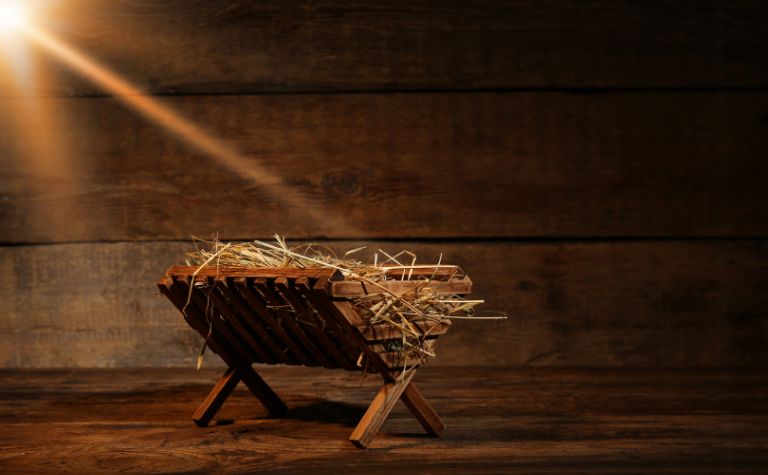Christmas is a cornerstone celebration for Christians around the globe.
Recognized and revered, this holiday marks the birth of Jesus Christ, a pivotal figure in Christian teachings.
While many associate Christmas with festive decorations, gift-giving, and joyous carols, its core significance for Christians goes much deeper.
It’s a time to commemorate a momentous event that shaped the course of Christian belief.
This article explores the reasons behind the Christian celebration of Christmas, tracing its origins, symbolism, and the profound impact it has on believers worldwide.

The Birth of Jesus Christ
At the heart of Christmas lies the celebration of the birth of Jesus Christ.
According to Christian teachings, Jesus was born in the town of Bethlehem to Mary and Joseph.
This event is detailed in the New Testament of the Bible, particularly in the books of Matthew and Luke.
These accounts describe the humble circumstances of His birth in a stable, with shepherds and wise men visiting to pay their respects.
The birth of Jesus holds profound significance for Christians.
It represents the arrival of the Messiah, a savior prophesied in ancient scriptures, who would bring salvation to humanity.
Jesus’ birth is seen as a divine intervention, a moment when God chose to become incarnate, living among humans to guide, teach, and ultimately offer a path to redemption.
The nativity story, as it’s often called, has been retold and celebrated for centuries.
It serves as a reminder of God’s love for humanity and the beginnings of a life that would change the course of history.
Every Christmas, Christians around the world reflect on this event, recognizing its central role in their beliefs and the foundation it provides for the holiday’s deeper meaning.

Historical Development of the Christmas Celebration
The celebration of Christmas, as we know it today, has evolved over centuries, influenced by various cultures, traditions, and historical events.
While the birth of Jesus Christ is central to the holiday, the way Christians have commemorated this event has seen significant changes throughout history.
In the early years of Christianity, the birth of Jesus was not celebrated as a separate festival.
Only in the 4th century did the church officially recognize December 25th as the date to celebrate Jesus’ birth.
This date was chosen, in part, to coincide with existing winter solstice celebrations, integrating Christian teachings with prevailing customs.
As Christianity spread across continents, Christmas began to take on local flavors and traditions.
In Europe, for instance, the holiday merged with Yule, a pagan festival, leading to customs like the Yule log and evergreen decorations.
Similarly, indigenous practices and beliefs were woven into the Christmas tapestry in other parts of the world, enriching its observance.
Over time, Christmas also became a time for charitable acts, reflection, and community gatherings.
The Middle Ages saw the rise of caroling and nativity plays, while the Victorian era introduced many of the familiar customs we associate with modern Christmas, such as Christmas cards and decorated trees.
Today, while customs and traditions vary globally, the essence of Christmas remains consistent: a celebration of the birth of Jesus Christ and the hope and joy it brings to believers worldwide.

Symbolism and Traditions
Christmas is rich with symbols and traditions that resonate deeply with Christians, each echoing their belief system’s core values and stories.
These symbols serve as visual and experiential reminders of the holiday’s significance.
The nativity scene is perhaps the most direct representation of the Christmas story.
Featuring figures like Mary, Joseph, baby Jesus, the shepherds, and the three wise men, it visually narrates the humble circumstances of Jesus’ birth in Bethlehem.
Stars often adorn Christmas decorations, representing the Star of Bethlehem that guided the wise men to Jesus.
This celestial symbol is a beacon of hope, light, and guidance in Christian teachings.
Angels, frequently seen on top of Christmas trees or in festive displays, are reminders of the angelic announcements of Jesus’ birth to the shepherds, signifying joy and the divine connection between heaven and earth.
Many Christian families also attend church services during Christmas, with Midnight Mass being a popular tradition.
These services are moments of reflection, gratitude, and communal celebration of Jesus’ birth.
Caroling is another cherished tradition, where songs about the nativity story and the joy of Christmas are sung, often going from house to house or performed in community gatherings.
Gift-giving, inspired by the gifts the wise men brought to Jesus, emphasizes the values of generosity, love, and gratitude.
It’s a way to mirror the ultimate gift Christians believe they received in the form of Jesus Christ.
In essence, each symbol and tradition associated with Christmas serves as a bridge, connecting the modern celebrations with the foundational events and teachings that define the holiday for Christians around the world.
Christmas as a Time of Reflection and Renewal
For many, Christmas is more than just a festive holiday; it’s a period of introspection and rejuvenation.
Amid the bustling activities, twinkling lights, and joyful melodies, there lies an opportunity for Christians to pause and reflect on their personal journey, values, and the deeper meaning of life.
The story of Jesus’ birth, set in humble surroundings, serves as a reminder of the simple yet profound virtues of humility, love, and sacrifice.
It encourages believers to look beyond the material aspects of life and appreciate the intangible blessings they possess, such as family, community, and love.
Christmas is also a time to renew one’s commitment to the teachings and values emphasized in Christian beliefs.
The story of Jesus coming into the world symbolizes new beginnings and the possibility of transformation.
It inspires individuals to evaluate their paths, make amends where needed, and set positive intentions for the future.
Furthermore, the season promotes the spirit of giving and kindness.
Acts of charity, whether big or small, become more prevalent, reinforcing the idea that true joy comes from helping others and making a difference in their lives.
In essence, Christmas offers a momentary retreat from the usual pace of life, allowing believers to reconnect with their core beliefs, refresh their spirits, and emerge with a renewed sense of purpose and hope.
Related Questions
Joseph, the husband of Mary and the earthly father of Jesus Christ, is depicted in the Gospels as humble, law-abiding, and obedient. In many Christmas scenes, such as in displays of the manger, he is...
The virgin Mary, the mother of Jesus, is one of the most fascinating people in the Bible. For 2,000 years, people of different eras and cultures have marveled at her faith in God. Mary's story in the...
